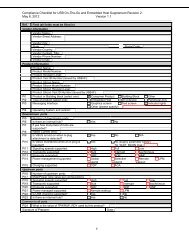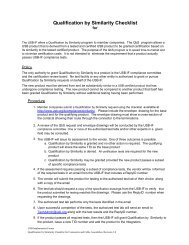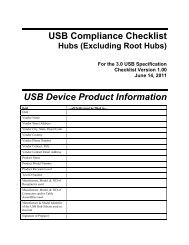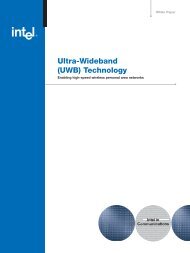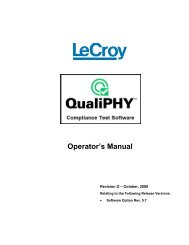Create successful ePaper yourself
Turn your PDF publications into a flip-book with our unique Google optimized e-Paper software.
57 <strong>HID</strong> <strong>Sensor</strong> <strong>Usage</strong>s<br />
3. <strong>Sensor</strong> Interaction via <strong>HID</strong><br />
This section describes how communication with <strong>Sensor</strong>s is mapped to <strong>HID</strong> mechanisms. This section is<br />
Informative, which means it is only for orientation and guidance.<br />
3.1 Related Documents<br />
The following documents provide additional information related to or referenced by this document. All of<br />
the documents listed below are available on the Internet at http://www.usb.<strong>org</strong>.<br />
[1] Universal Serial Bus Specification<br />
[2] Device Class Definition for Human Interface Devices (<strong>HID</strong>)<br />
[3] Universal Serial Bus <strong>HID</strong> <strong>Usage</strong> <strong>Tables</strong><br />
[4] Universal Serial Bus <strong>HID</strong> Point of Sale <strong>Usage</strong> <strong>Tables</strong><br />
[5] HUTTR30 Addition of usages related to touch digitizers<br />
[6] HUTTR34 Addition of usages related to multi-touch digitizers<br />
[7] Device Class Definition for Physical Interface Devices (PID)<br />
3.2 Functional Overview<br />
The Functional connection model for the <strong>Sensor</strong> class is below. There are two roles of communication.<br />
The host computer initiates requests. One or more sensor devices reply to the requests.<br />
<strong>HID</strong> defines communication channels called Pipes. Every host and device must have a bidirectional<br />
Control Pipe. Devices may use additional Pipes for unidirectional communications.<br />
For <strong>Sensor</strong> Devices, the <strong>HID</strong> Input Pipe is mandatory, and the <strong>HID</strong> Output Pipe is optional.<br />
Each end of a Pipe is called an Endpoint.<br />
Figure 4. <strong>HID</strong> Functional Model<br />
The data transfer mechanism for the <strong>Sensor</strong> class is based on the <strong>HID</strong> class Report Descriptors.<br />
Communication with a <strong>Sensor</strong> device is identical to that of a <strong>HID</strong> device.



